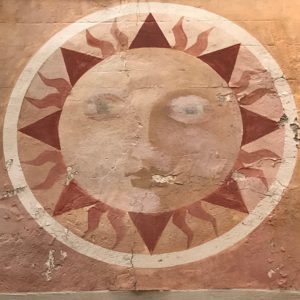Ladies and Gentlemen: Here is your Convivio Book of Days for August. Its tardy arrival is an embarrassment, and I apologize. My own transition to August has not gone at all as expected. It began with teaching a weeklong summer book arts camp for young teens, a week that threw my life a bit off the rails. The person who was supposed to teach the camp bailed at the last minute and so I was asked and I agreed to do it. I’d be home each day by 4:30, I’d get an hour lunch each day. I never get an hour for lunch in my regular job. I even brought my journal with me, for all the luxurious free time I’d have during lunch to write.
My journal is still in the back seat of the car, unopened. In retrospect, I feel like maybe the instructor who quit had some inside information on these kids and opted to jump ship. Me, I went in expecting to teach 16 kids who wanted to learn how to make books to do just that. There were a few who did have a bit of that drive: MacKenzie, Taylor, Emily… maybe even Natalia. The rest? Not so much. I suspect they were there because it was late summer and their parents really didn’t know what to do with them anymore and so they coughed up a lot of dough to place them somewhere, anywhere, for a week. It could’ve been a book arts camp or it could’ve been a labor camp––the experience didn’t matter so much as just finding some place for their kids to go that didn’t involve them.
I won’t go into detail, but if you teach middle school, God bless you. Some of us have what it takes and some do not, and I, most certainly, do not. I was a walking zombie all week, vampirized by those kids. It was only once the weekend was half over that I realized that the letterpress printed calendar that my friends Gail and David sent me was still set on the July page. And so on Sunday I turned the page to August and set to work, as well, on the Book of Days calendar project for August. Let me tell you: It’s nice to be back. Your cover star this month? A treehouse I stumbled across on one of my walks through Götzis, Austria, when Seth and I were there in July. I was walking back from the post office down by the train station when I saw it. A gnome protects the tree house, which I imagine is frequented by children who have great imagination and creativity. Perhaps they don’t yet have phones, and their lives don’t revolve around memes on YouTube. Maybe they are kids who like to be outdoors and who like to run around and experience the real world. They like cherries and they like to make things. Anyway, I hope so.
Enjoy the calendar! You’ll hear from me again this week for Obon––one of my favorite summer holidays.
John


